Wildflower families: Caryophyllaceae, the Campion family

Wildflower families: Caryophyllaceae, the Campion family is another of the blogs I’m writing on wildflower families, inspired by my online Field Studies Council course. Learning the similarities between members of the same plant family is really useful for my illustration work.
These blogs cover some of the commoner wildflower families. It might help to look at some of my earlier blogs on the basics of botany, different fruit types, and how scientific names work (What’s in a name 1 and part 2). Please check out the other family I’ve covered, the Ranunulaceae (Buttercups) and check back for more over the coming weeks.
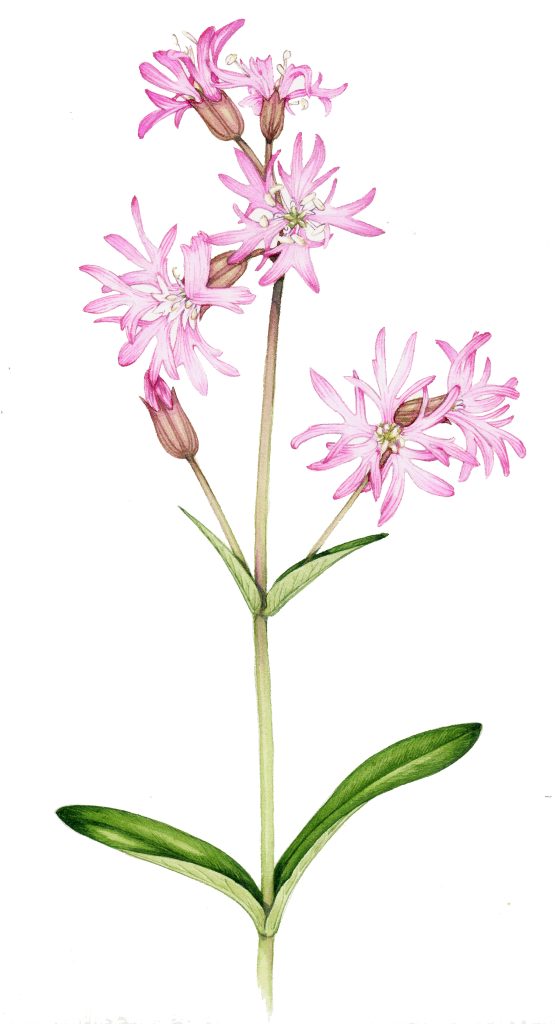
Ragged robin Lychnis flos cuculi
I’d like to note that I am an amateur, and not a professional botanist. I’ll do my best to get stuff right, but if you see any errors, please tell me.
Wildflower families: Caryophyllaceae
The Campion family has 89 genera and over 2070 species globally. Plants have simple, opposite leaves and petals are frequently notched. As well as Campions, Caryophyllaceae include garden flowers like Sweet William, Carnations, Pinks and Maltese cross. Many wildflowers are in this family, including the Chickweeds, Mouse-ear, and Stitchworts.
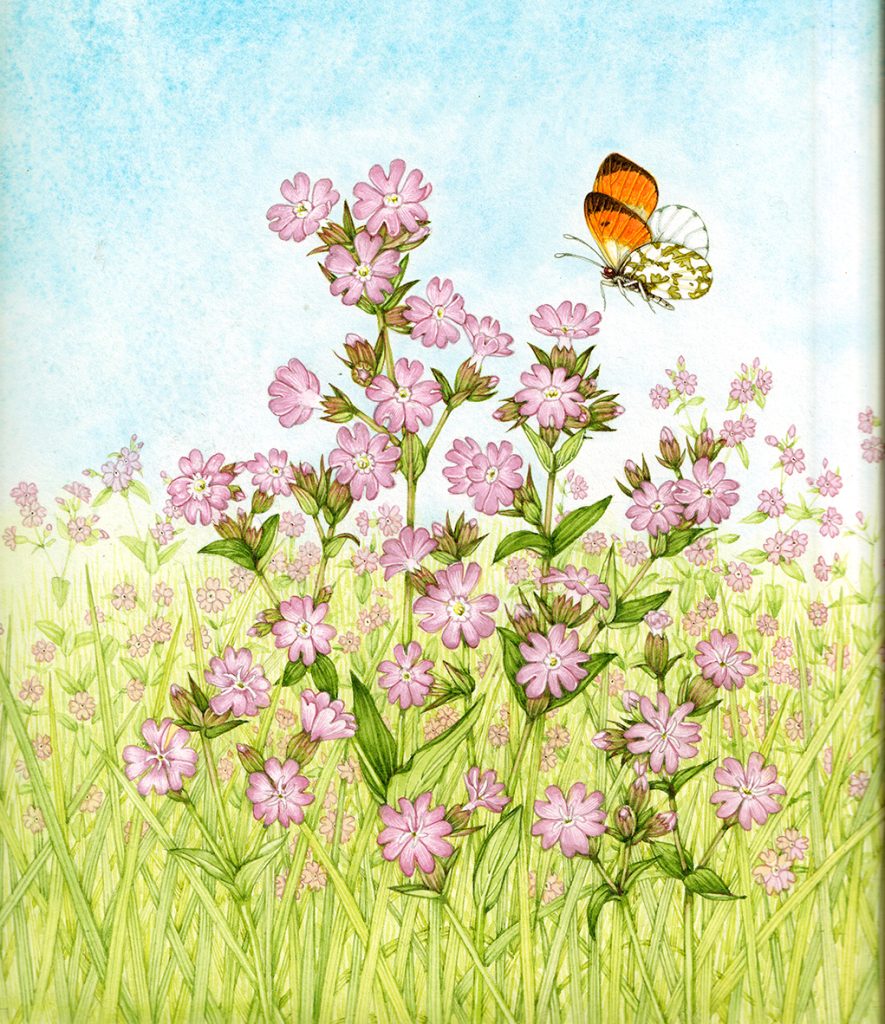
Red campion Silene dioica with Orange-tip butterfly
Caryophyllaceae overview
Plants in this family have simple leaves in opposite pairs, often have pink or white notched petals, and tend to have seeds held in capsules which are distributed when the wind blows, or a passing animal shakes the seed head. The name Caryphyllaceae comes from “Caryophyllus” an earlier Latin name for the Carnation (now Dianthus).
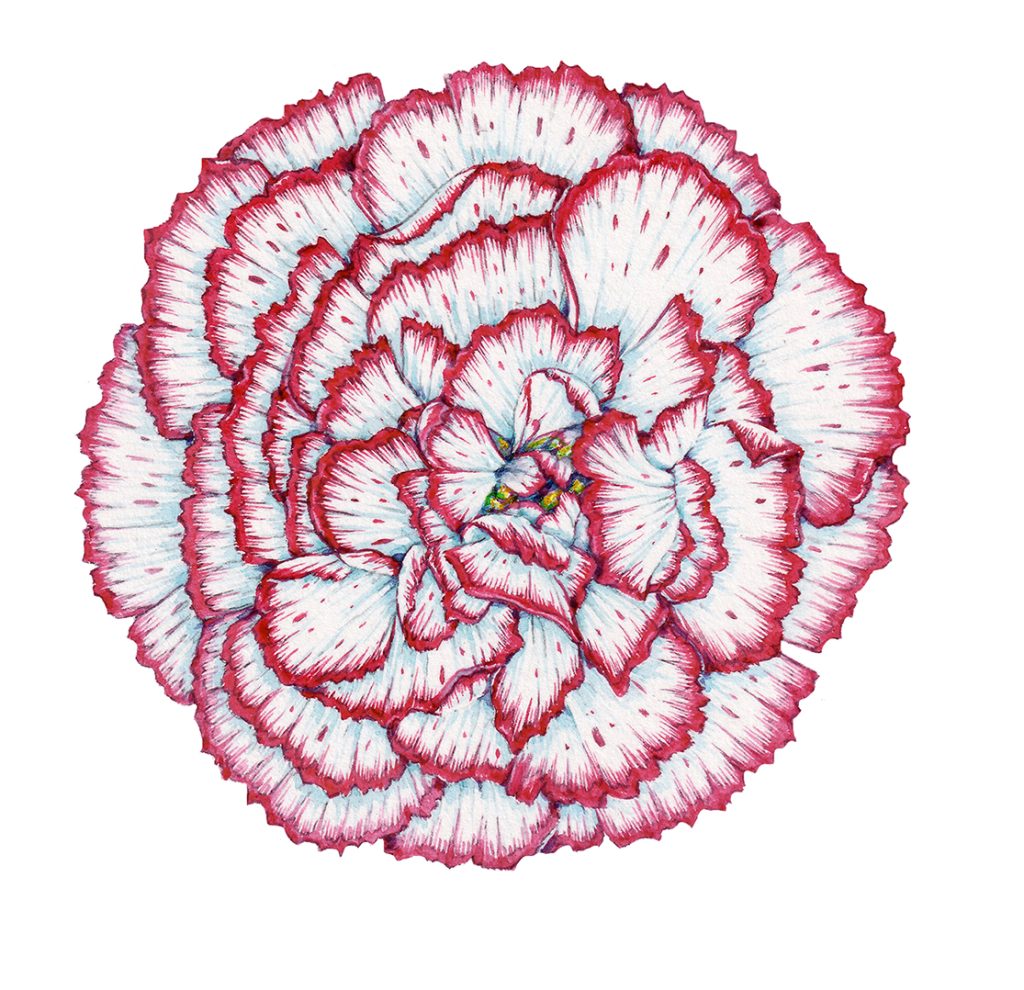
Carnation flower Dianthus caryophyllus
Caryophyllaceae Leaves
Caryophyllaceae leaves are simple, with smooth margins and no lobes or divisions. This makes them remarkably easy to illustrate! They do not have stipules. Side branches frequently at the axils of the leaves.
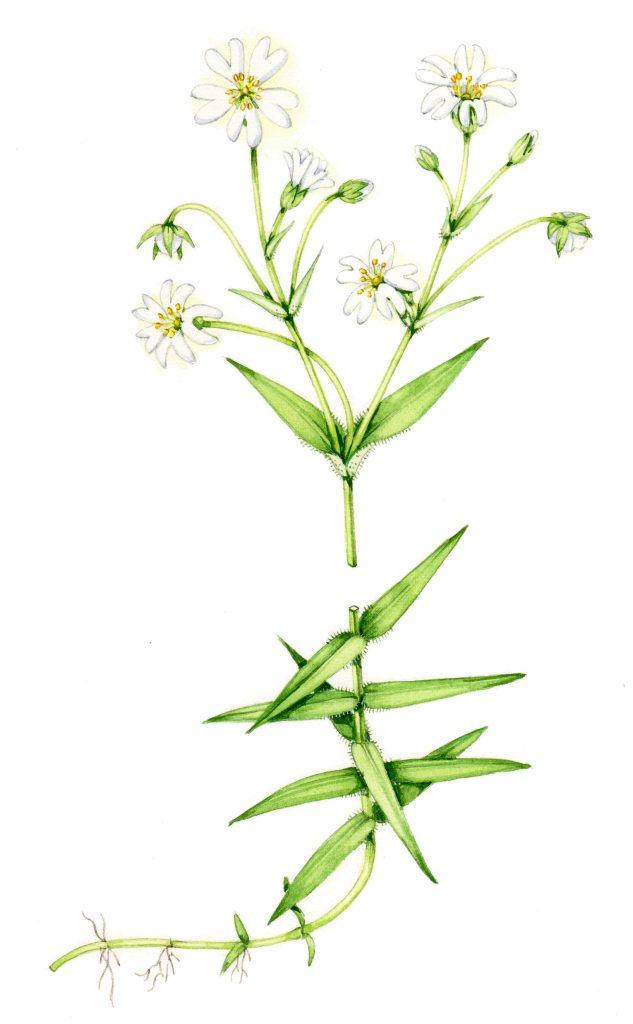
Greater stitchwort Stellaria holostea
Just below where the paired leaves attach to the stem, there is sometimes a swelling.
Caryophyllaceae Flowers
Flowers tend to flower in a dichasial cyme at the top of the branches, with numbers of flowers in an inflorescence varying according to species. A diachasial cyme shows an arrangement with a shorter central flower flanked by taller flower on branches either side of it.
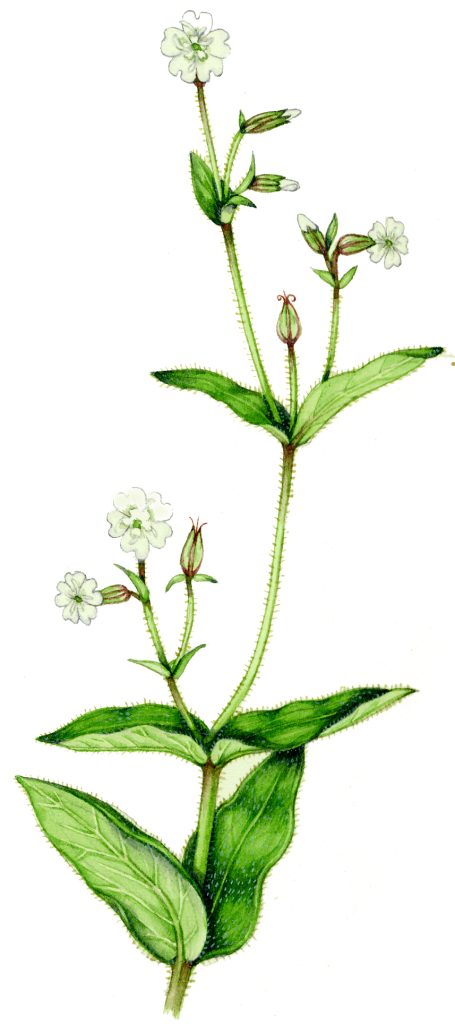
White campion Silene latifolia
There are five petals and four or five sepals. These are either overlapping or fused at the base. This calyx tube can be inflated (as with the Sea campion) and the shape of the sepal teeth is important for species identification. Petals are not fused.
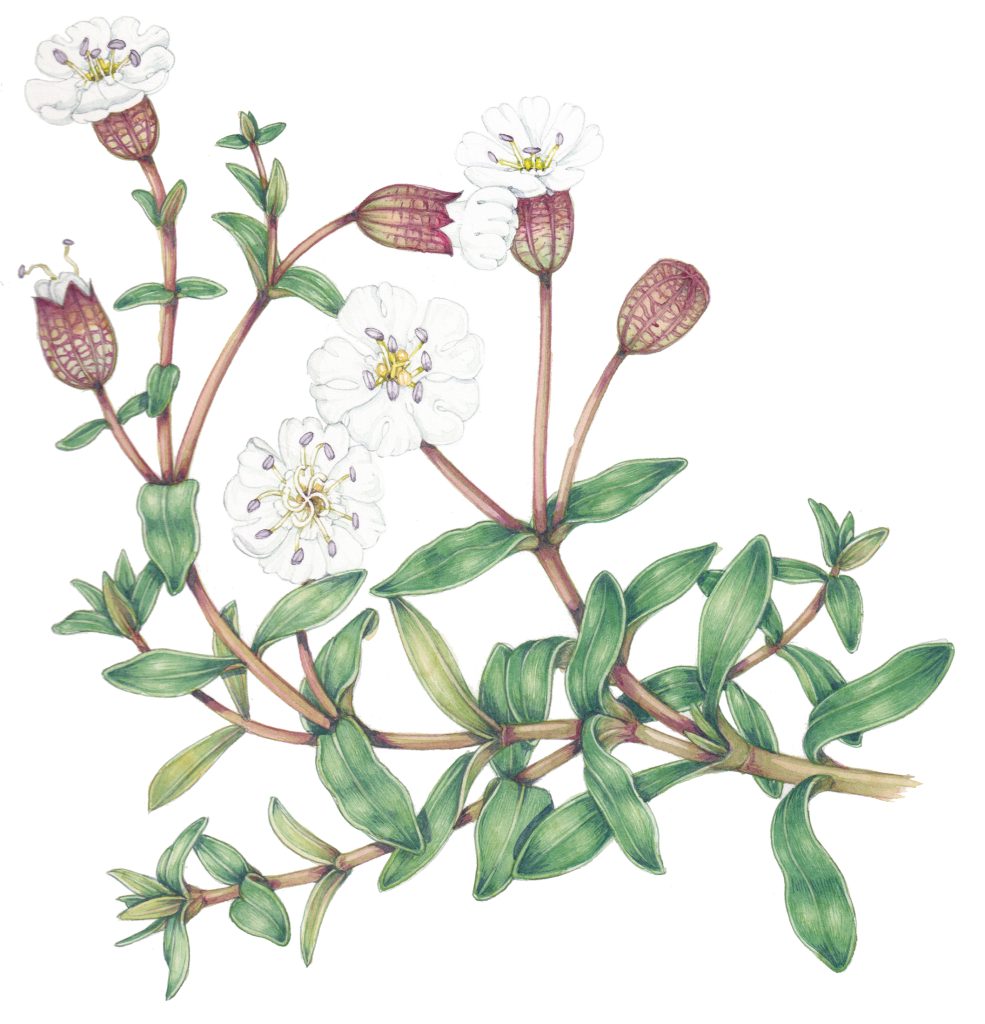
Sea campion Silene maritima
Flowers are regular, with radial symmetry. Although most are all pink or white, garden varieties of carnation and pinks show a wide range of colours and patterns. They are bisexual. The petals have notches, as with the Red campion, or can be much more deeply divided, as with Ragged robin.
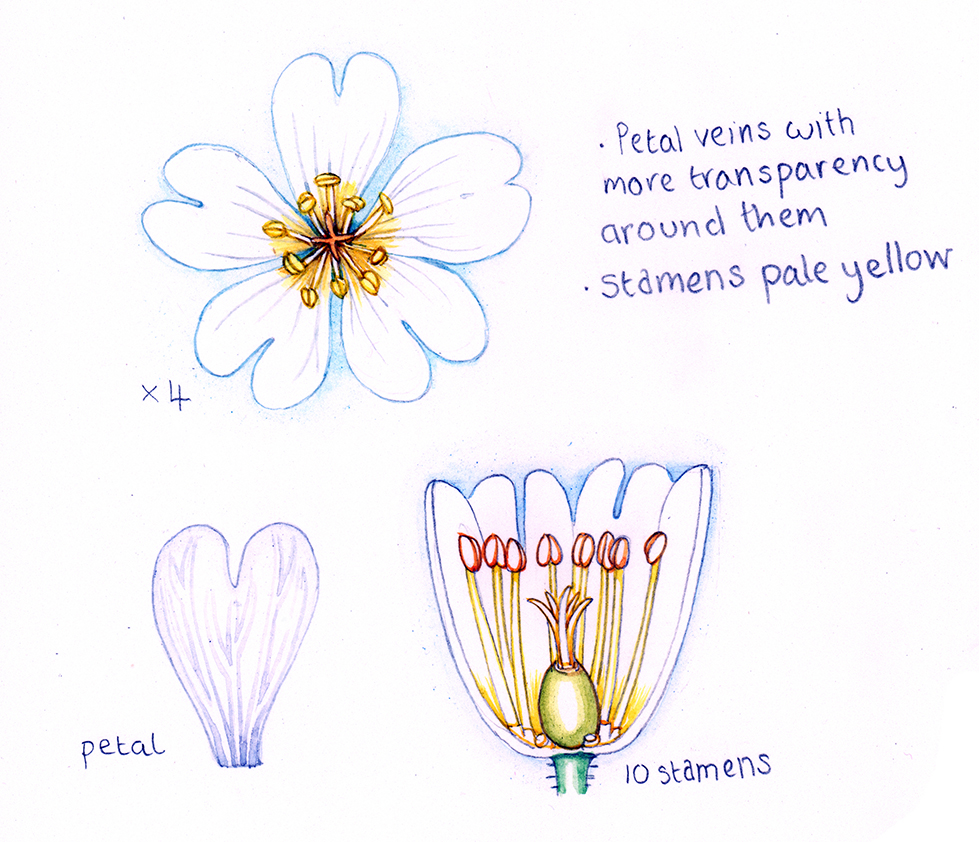
Snow-in-Summer or Dusty Miller Cerastium tomentosum
There are five or ten stamen, often five long and five short ones. This pattern tends to occur in species with fused sepals. When the sepals are not fused, there are eight or ten stamens, all of a similar length.

Sketchbook study of Red campion Silene dioica
There can be two to five fused carpels which form a compound ovary. This is superior, and grows above the rest of the flowering structure. For more on this look at my blog on the ovary.
Caryophyllaceae Fruit
The ovaries (which develop into seeds once fertilized) are numerous and frequently form double rows. Ovules are curved.

The seeds mature into a dry one-celled capsule, held at the end of a long stalk. When the seeds are ripe, the capsule will split at its tip and teeth will curve backwards, leaving openings for the seeds to shake out through. Animal action or wind help disperse the seeds. Occasionally the fruit is a berry (Cucubalus) or an achene.
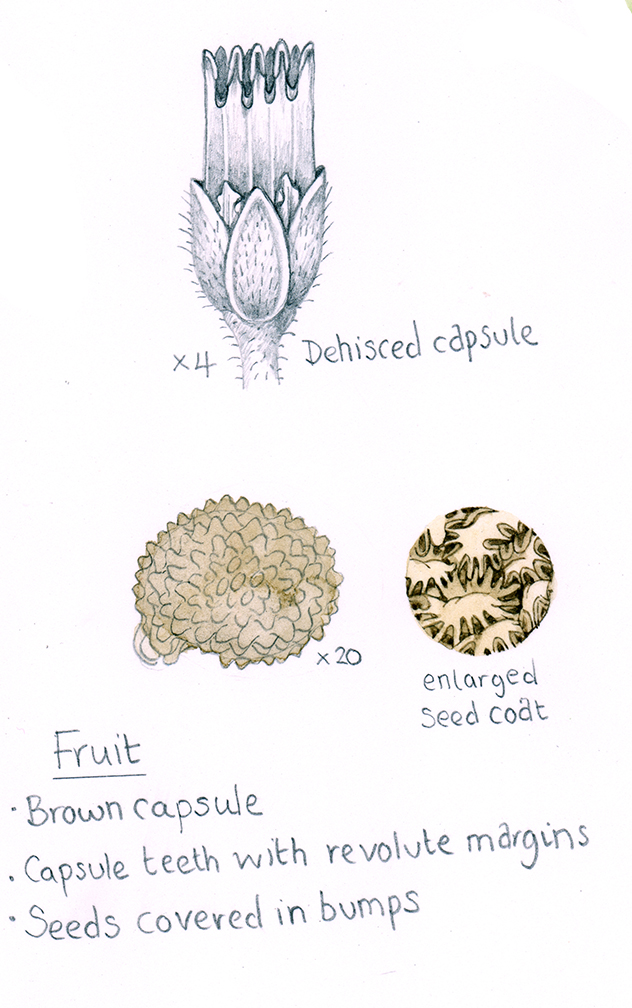
Snow-in-Summer or Dusty Miller Cerastium tomentosum detail
Caryophyllaceae: Other species
Along with the carnations and pinks, Snow-in-summer is another garden plant in this family.
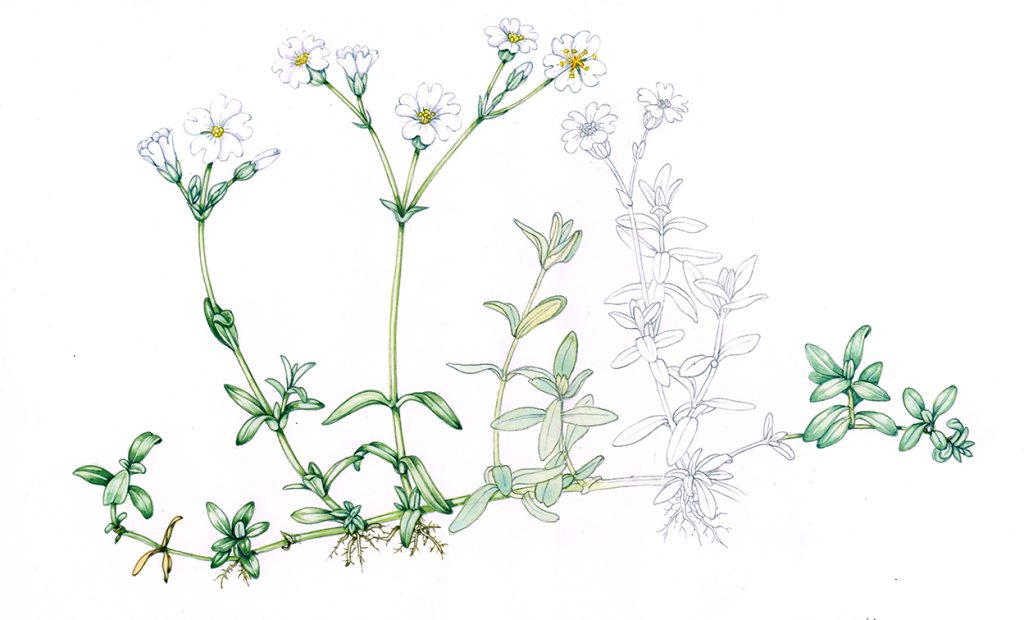
Snow-in-Summer or Dusty Miller Cerastium tomentosum
Chickweed, which flowers year round in most habitats, join Mouse-ear and the Stitchworts in being regarded as white-flowering weeds. The most obvious Caryophyllaceae wildflowers are the wild campions which grow along shady roadsides, in woodland and fens, and (in the case of the Sea campion), in maritime habitats.
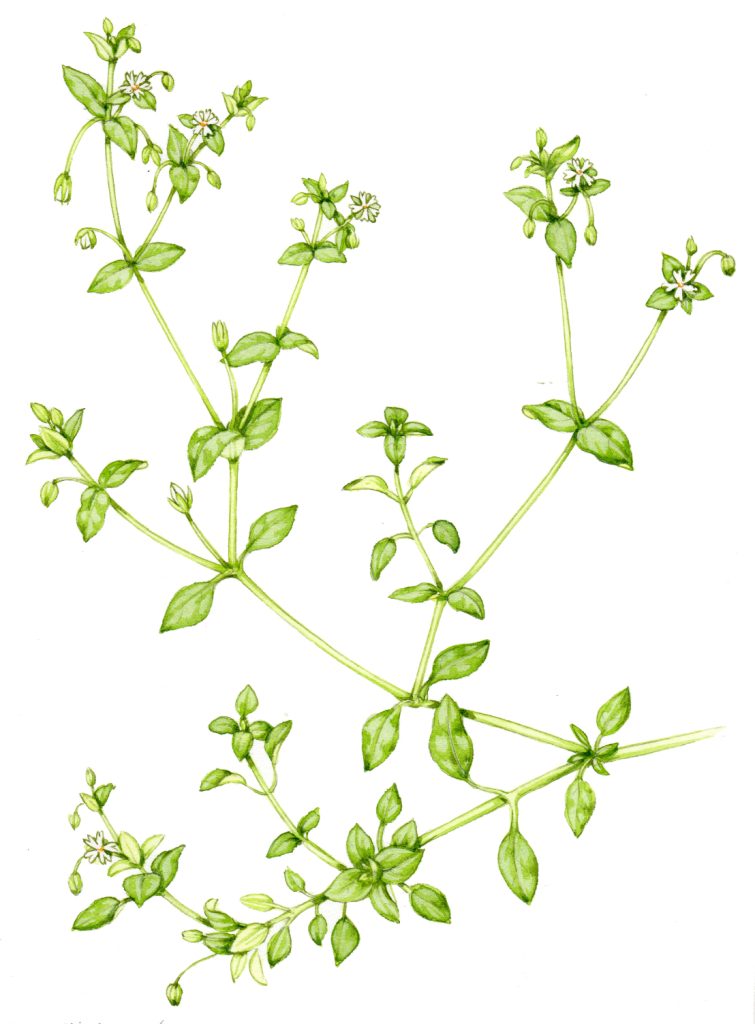
Common Chickweed Stellaria media
Conclusion
I hope this tour one of the common wildflower families has been of interest. Look out for more blogs in this series over the coming weeks and months. Reference for this series includes the FSC botany course, from Common Families of Flowering Plants by Michael Hickey & Clive King, and from Naturespot.
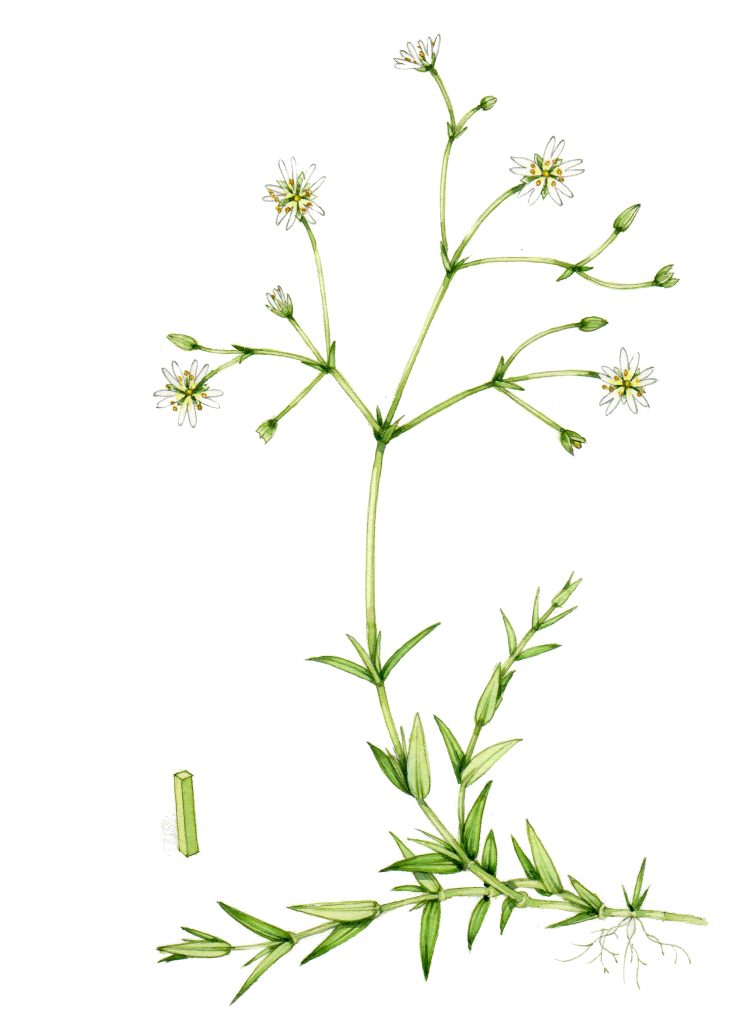
Lesser stitchwort Stellaria graminea


Thank you, Lizzie. Very well laid out and explained. I enjoyed it,and not only because My name is Campion! Best wishes, Valerie
Thankyou Valerie!